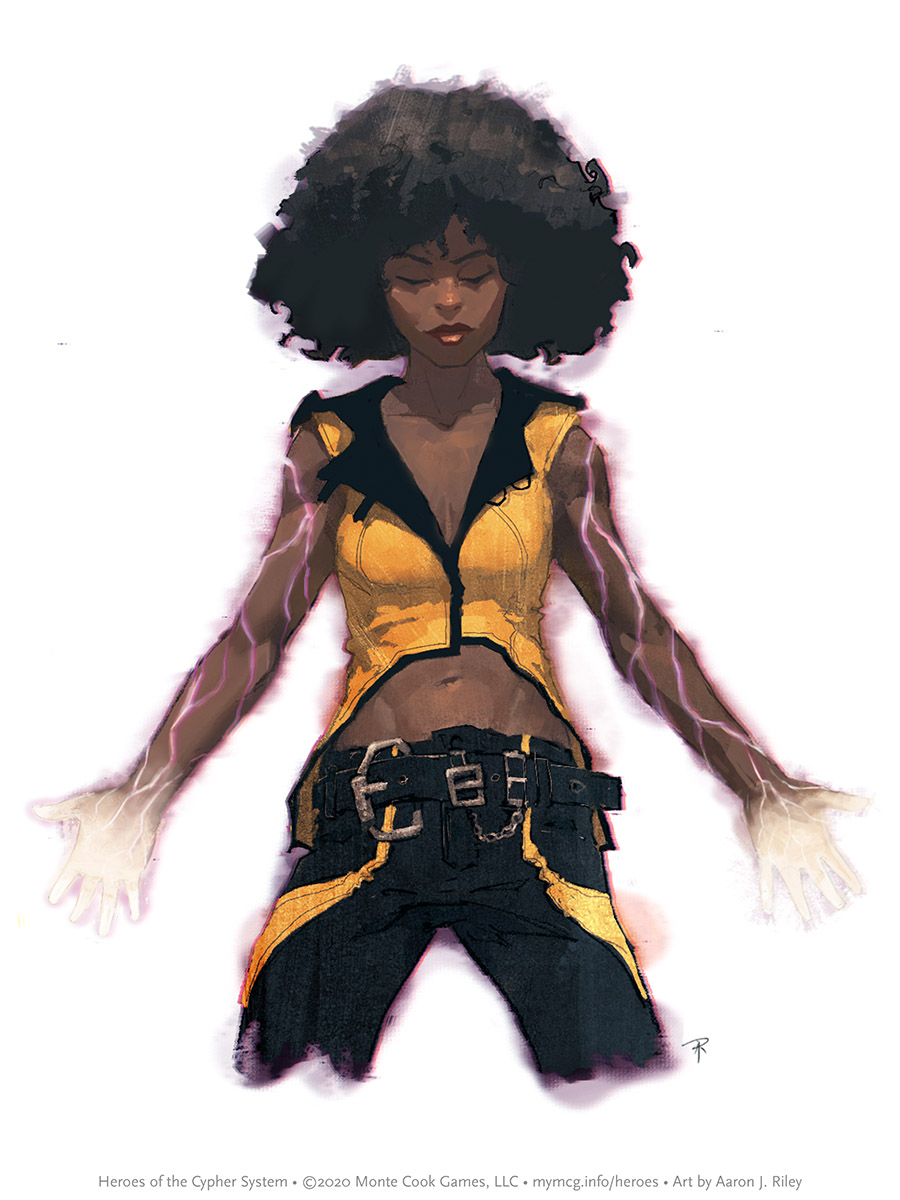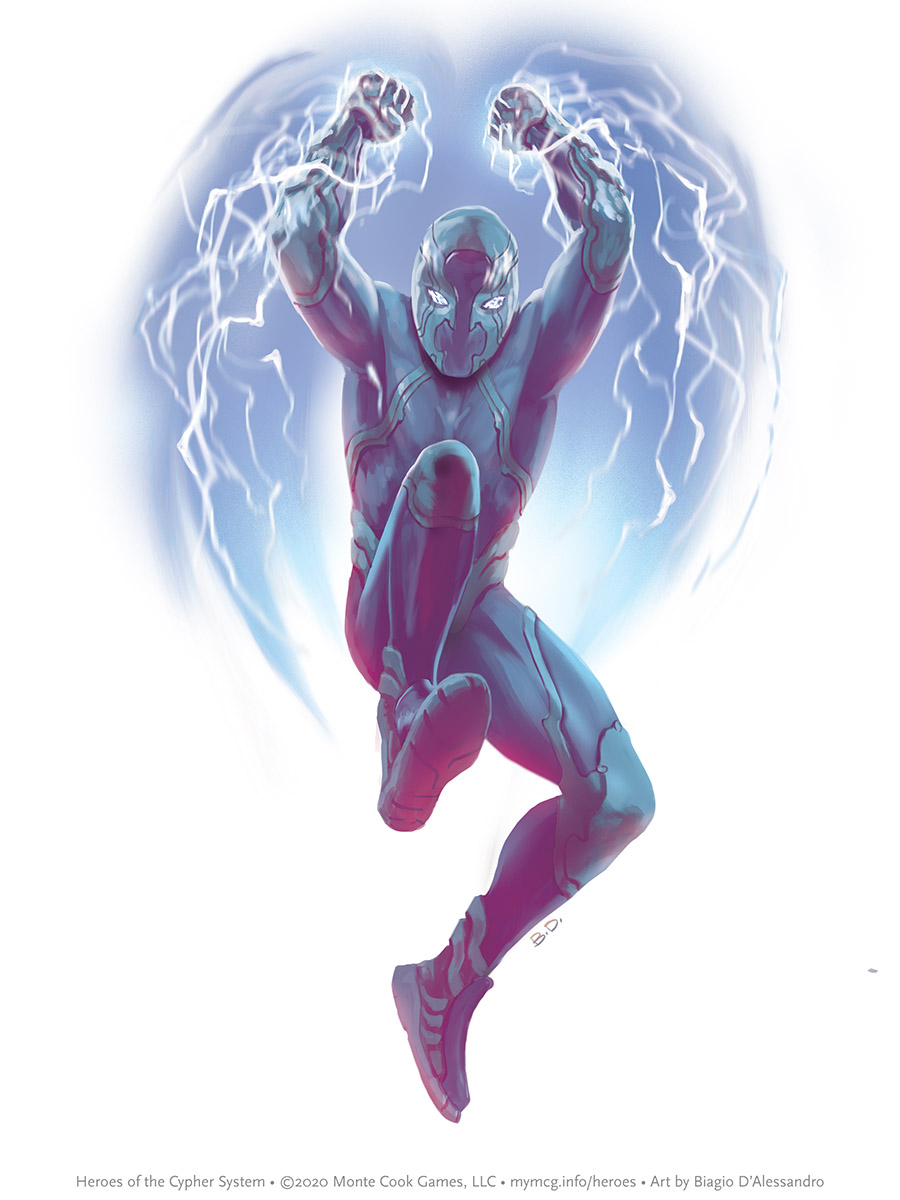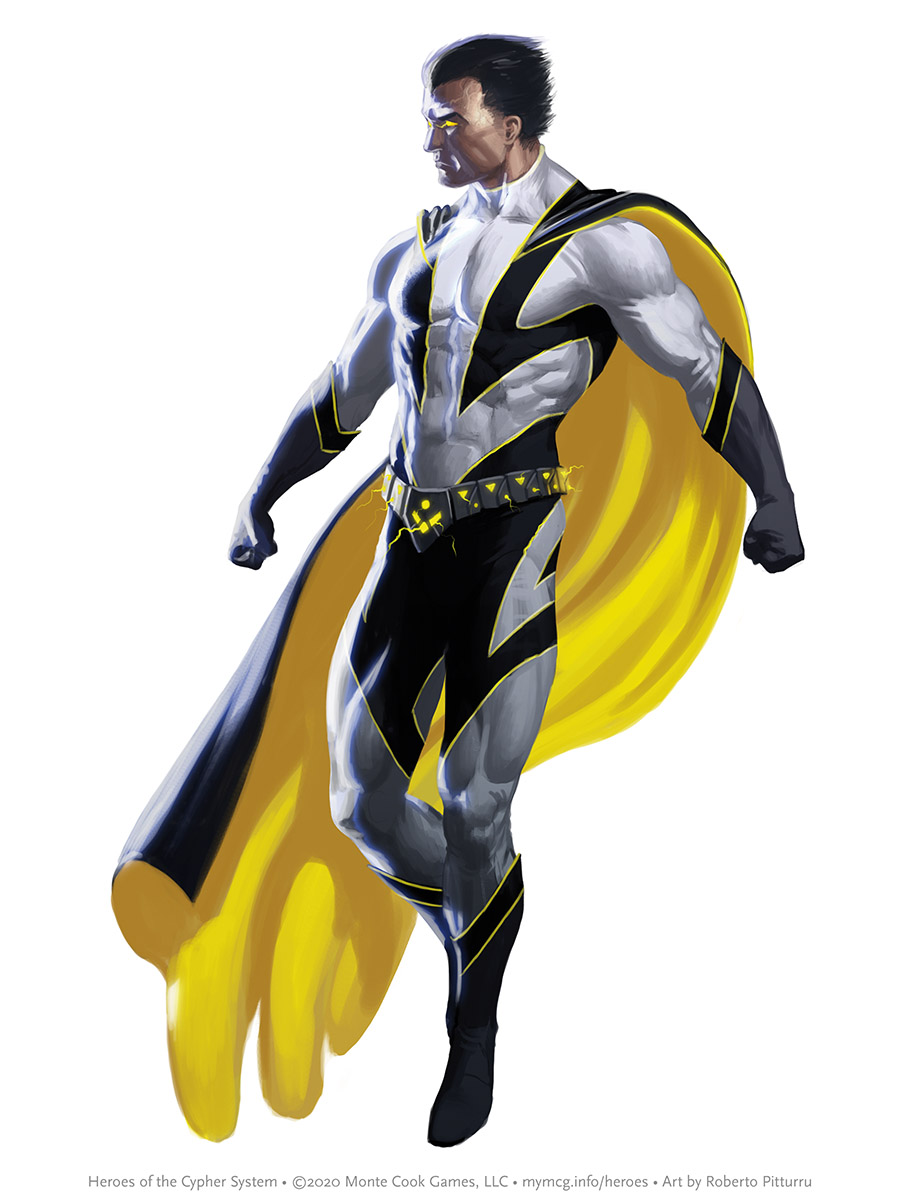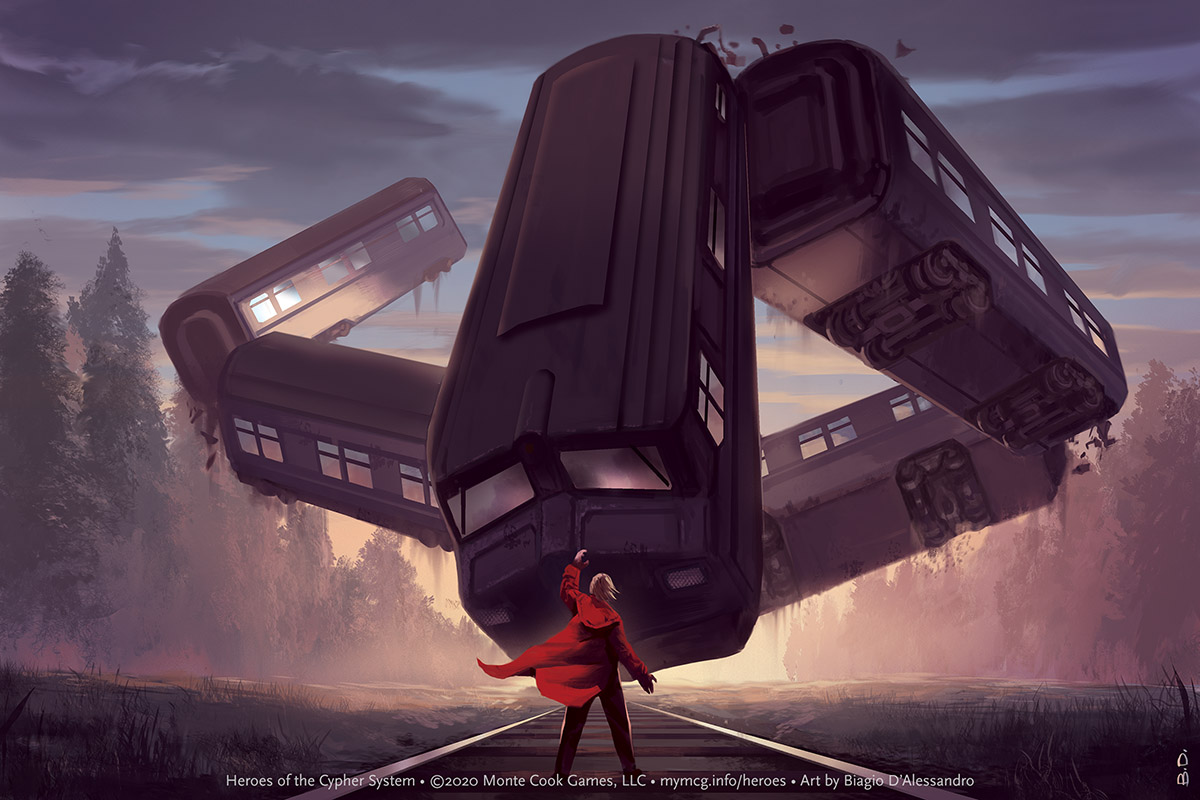Want a glimpse into what we’re planning to do with superheroes in the Cypher System? Here’s an annotated outline for Claim the Sky, which is part of the Heroes of the Cypher System Kickstarter campaign. If you have one of our existing genre books, like Stay Alive! (horror) or The Stars Are Fire (science fiction), you’ll see some similarities in the approach. The bottom line is that you’ll be able to run virtually any campaign you can imagine within the full breadth of the superhero genre, and find lots of support in this book. Plus a full-fledged campaign setting! Take a walk with us through this heroic book:

Part 1: Gaming with Superpowers
Chapter 1: Building a Superhero
If you already have an idea for a superhero, whether it be modeled on an existing character from the comics or movies or something all your own design, this chapter will provide step-by-step guidelines for using the Cypher System to bring that character to reality. It also discusses avoiding stereotypes and walking the fine line between the cliché and the comfortably familiar.
Chapter 2: Superheroic Character Options
Continuing to focus on player characters, this chapter presents new descriptors, new foci, and a new look at types and flavors. Also included are new rules for balancing weaknesses and shortcomings that can help balance a high-powered hero.

Chapter 3: Superpowered Rules
Building on the rules in the Cypher System Rulebook, this chapter offers more options for replicating abilities seen in comics and movies, difficulties and NPCs above level 10, using XP to directly increase a specific power, jury-rigging high tech devices, “coming back from the dead,” and much more.
Chapter 4: A World With Powers
When designing a setting for superheroes, there is a wide gamut of options. Weaving together a place where aliens, mutants, wizards, and high tech all intermingle requires a bit of thought. This chapter offers advice and ideas for creating realistic settings, comic-book style settings, and far future settings, and discusses all the choices involved with each. You’ll also get advice on creating character names, handling vigilante justice versus official authorities, dealing with the villains once they’re defeated, and more.
Chapter 5: Comic Book Storytelling
This chapter discusses extensively the tropes of comics and super heroes—recurring villains, secret identities, cliffhangers, crossovers, guest stars, nemeses, storytelling through action, and much more. Also included are GM-focused discussions on balancing power levels, using different kinds of powers to challenge different kinds of heroes, GMing “mastermind” NPCs, and so on. Lastly, it offers a meta system for dividing stories into “issues” and “arcs” for GMs who really want a comic book feel.

Chapter 6: Superhero Stories
For GMs who want to move beyond “stop the villain from robbing the bank” scenarios, this chapter offers a number of brief descriptions for one-shot adventures and ongoing, campaign-style storylines (and how to weave them together). It also addresses the different kinds of stories from “street level” heroes all the way to cosmic beings.
Chapter 7: Cypher Shorts
As with our other genre books, this chapter offers a handful of brief, one-shot, ready-to-play scenarios in any superhero setting.
Chapter 8: Creatures and NPCs
Where would heroes be without villains? This chapter offers stats and descriptions for a plethora of villains as well as aliens, robots, genetic monstrosities, and more.
Chapter 9: Superheroic Cyphers and Artifacts
This chapter offers more power-boost cyphers, high-tech manifest cyphers for high-tech heroes, weird alien and magical artifacts, and a few surprises.
Part 2: Boundless
Chapter 10: Overview
Boundless is intended to evoke (but not replicate) the superhero settings from comics and movies that we all love. Boundless is earth as we know it, but wondrous powers, aliens, high technology, and even magic all exist. Heroes here deal not just with criminals, but megalomaniac conquerors and terrorists as well as threats and challenges from other planets, from mystic realms, or even from beyond time.

This chapter also answers questions like what technology from “alternative” sources (like aliens, super-geniuses, etc.) has made its way into the lives of regular people and what exactly does the typical person know about superpowers, other dimensions, and so on.
Chapter 11: Boundless Player Characters
This chapter briefly discusses how the PCs can fit into the setting, including appropriate locations and foes based on the characters’ area of focus, suitable enemies, allies they might have among the other heroes, and groups that might offer them affiliation or membership.
Chapter 12: History of the World
In the distant past, the alien Azaki visited Earth, and manipulated protohumans (and other animals) on a genetic level. Hidden, high-tech citadels of the Azaki can still be found in remote corners of the world. (Their manipulations and technological artifacts are responsible for many of the heroes and villains of the setting.) Superheroes first became prominent in the twentieth century, particularly during the world wars. After WW II, a secretive, international agency called BASTION (Bulwark Against Supernatural Threats of an Illicit or Ominous Nature) was founded to help deal with the growing challenges that superpowers and high technology presented. As the Cold War ended, superpowered individuals became less political and developed an almost insular community of heroes, rivals, and outright villains, all with their own agendas.
(We’ll include more on the history and the movers and shakers in the setting in an upcoming article.)
Chapter 13: Superpowered Survey
This chapter details the various heroes and villains based around the world, in places as disparate as New York, London, Tokyo, the Amazon, and Nairobi, and everywhere in between. Special emphasis is given to two particularly powerful and influential threats: the Royal House of Videsh, rulers of a small, isolated Himalayan kingdom, each with their own superpower, and the secretive international criminal syndicate known as the Dagger.
Specifically detailed locations include BASTION headquarters (and superpowered prison), Silver Sentinel’s Lunar Base, the hidden Azaki citadel in the Andes, the lost subterranean realm of Inner Earth, the interdimensional Worlds Between, the far-flung planet known as Mystery Earth, and many more.

Chapter 14: Adventure: Death, Thy Name is Gravitas
The extremely dangerous megalomaniac wielding the power of gravity itself calls himself Gravitas and seeks to work out his anger issues… on an entire city.
Chapter 15: Adventure: Talons of Doom
A confederacy of criminals and villains joins forces to systematically eliminate as many heroes as they can so that they can operate unchecked. The PCs must stand against them, or simply become their next victims.
Chapter 16: Adventure: Beneath a Red Sun
The heroes must travel to the planet Korboros in a distant system in order to prevent a catastrophe that would have grave implications all the way back on Earth.